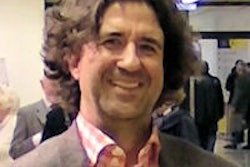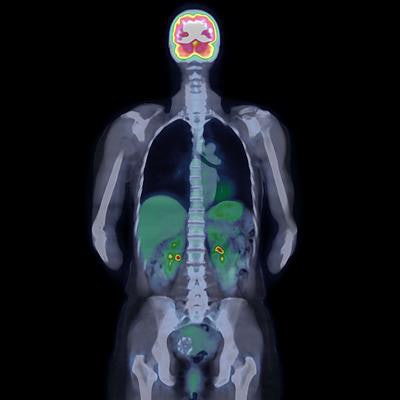
As this month's first anniversary celebrations draw to a close for the European Society for Hybrid Medical Imaging (ESHI), its president has stressed that more collaboration and better education and training are vital for the future success of hybrid imaging.
"It has been a great first year," said Dr. Katrine Riklund, PhD, who is immediate past president of the European Society of Radiology (ESR), in an interview with AuntMinnieEurope.com. "Membership has grown to over 500 across several disciplines and there is a real appreciation among our members for our specialized training in hybrid imaging."
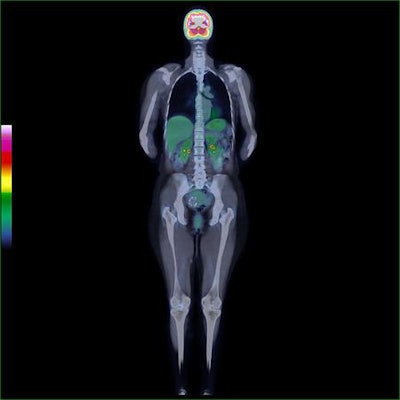 PET/CT continues to offer exciting clinical possibilities, but also poses challenges in training and education. All images courtesy of Dr. Katrine Riklund.
PET/CT continues to offer exciting clinical possibilities, but also poses challenges in training and education. All images courtesy of Dr. Katrine Riklund.Among the notable successes during the past year is the recent agreement between the International Atomic Energy Agency (IAEA) and the ESR on joint strategy and cooperation, which has reinforced hybrid imaging's key role in disease assessment and follow-up, she noted. The memorandum of understanding signed on 28 February marks a new era for radiology education and training that will now benefit from the official input of IAEA.
This agreement is thought to be the first of its kind between the IAEA and a professional medical society. It was followed by a similar agreement for education between IAEA and the European Association of Nuclear Medicine (EANM), underlining the new mood of cooperation in Europe.
IAEA's planned activities with ESR include a series of webinars, sponsored participation in ESR-organized training courses for healthcare professionals from low- and middle-income countries, and the development of e-learning materials. Hybrid imaging and the resulting need for training in PET/CT and PET/MRI will be a particular focus, with dedicated webinars coordinated by ESHI, which was founded at ECR 2016.
Training efforts
Riklund reports that ESHI's first webinar on hybrid imaging basics, which took place on 22 February, was particularly well received. Eight others will follow over the course of 2017. Members can follow the society's calendar through ESHI's newsletter and website, which plans to include a case of the month and features about hybrid imaging departments across Europe and beyond.
Among the events lined up for this year is a satellite symposium, "Evolving hybrid imaging into clinical practice," which will be held by ESHI and the European Society of Molecular and Functional Imaging in Radiology (ESMOFIR) in Cologne, Germany, on 8 April.
On 31 August and 1 September, there will be a two-day "Introduction to hybrid imaging in oncology," a course affiliated to the European School of Radiology (ESOR). This ESOR-ESHI Asklepios Course: Introduction to Hybrid Imaging in Oncology, first held in September 2016, proved popular with residents and newly qualified specialists, and welcomed participants from 32 countries, including Chile and Mexico, according to Riklund. Invited speakers introduced attendees to hybrid imaging, radiotracers, and physics, then covered the clinical topics of lung cancer, lymphoma, gynecological, prostrate, and colorectal imaging, through lectures and case-based interactive workshops.
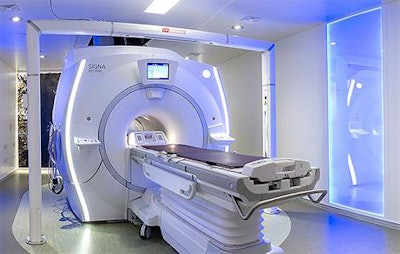 The development of PET/MRI is an important part of ESHI's remit. Photo by Mikael Stiernstedt.
The development of PET/MRI is an important part of ESHI's remit. Photo by Mikael Stiernstedt.In October 2016, there was a one-day preparatory course for the European Diploma in Radiology (EDiR), focusing on the basics of hybrid imaging, she continued. The day's agenda covered five clinical topics: lymphoma, lung cancer, pediatric oncology, PET/MRI methods and applications, and artifacts and solutions in hybrid.
This same ESOR course for EDiR on hybrid imaging will be held again at the ESR Learning Centre in Vienna later this year to prepare prospective candidates for the EDiR scheduled for 14 November. Board-certified radiologists wanting to update their knowledge are also welcome, she continued.
In addition, a repeat of the ESR-RSNA one-day course in hybrid imaging will take place at RSNA 2017 and be matched at ECR 2018, along with other related sessions. Furthermore, over the next couple of years, ESHI and ESOR plan to develop a specific diploma in hybrid imaging with its own subspecialized curriculum.
The planned hybrid imaging courses are likely to be in high demand by non-European and European imagers alike because of ESOR's reputation for high quality education, and the provenance of its members, according to Riklund. Up to 30% of ESHI's membership is from outside of Europe, predominantly the U.S, Oceania, South America, and Latin America.
Membership profile
The combined input of radiology and nuclear medicine draws many different types of expert to hybrid imaging. A total of 47% of ESHI's members are radiologists, 17% radiology residents, 13% nuclear medicine physicians, 13% other physicians, physicists, and researchers, and the final 10% describe themselves as "other," Riklund noted.
Although ESHI has fewer nuclear medicine specialists than radiologists among its members, she believes that concentrating too much on membership statistics might be missing the point.
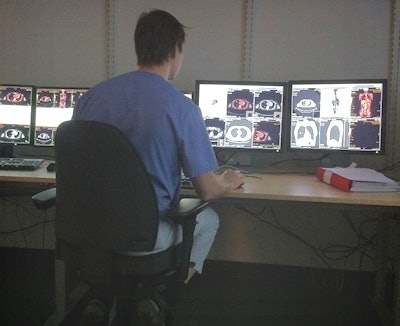 Knowledge of both nuclear medicine and radiology is vital for effective disease assessment and follow-up through hybrid modalities, and radiology and nuclear medicine residents are demanding crossover training, according to Riklund.
Knowledge of both nuclear medicine and radiology is vital for effective disease assessment and follow-up through hybrid modalities, and radiology and nuclear medicine residents are demanding crossover training, according to Riklund."We are interested in getting members who work with, or plan to work with, hybrid imaging. Their background of nuclear medicine or radiology is not the major question. The goal of ESHI is to find the best ways to use hybrid imaging for patients," she stated.
ESHI is keen to collaborate with other societies, including EANM, because both are important in hybrid imaging, according to Riklund. She further believes the only way for societies to move forward is through such collaboration.
"We need to ensure that we optimize the data gained from the CT and MR part of a PET/CT or PET/MR exam. The role of radiology in these hybrid exams is much bigger than some people think. A high-quality CT or MRI during a hybrid procedure can not only localize disease but also provide doctors with a lot of information about it and about treatment response. Therefore, hybrid imagers need to train in both radiology and in nuclear medicine," she noted.
Riklund pointed to a questionnaire sent by ESR and EANM to their respective residents' societies. The overriding result is clear: Both groups of residents want more crossover training to optimize hybrid imaging practice, she concluded.








